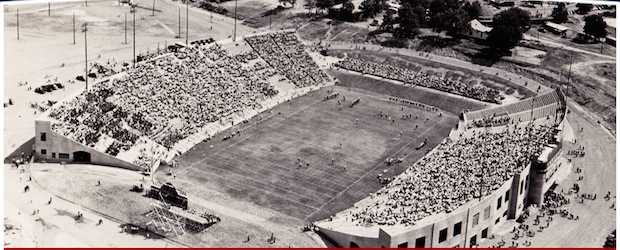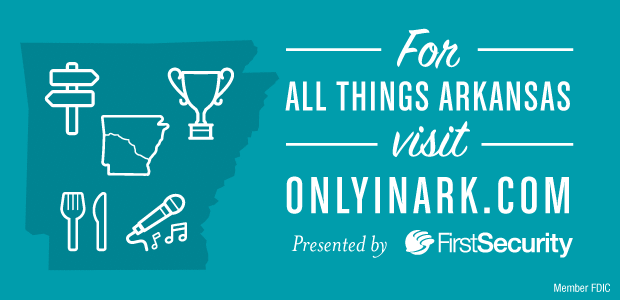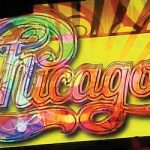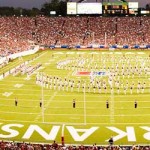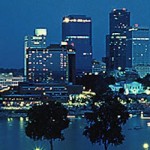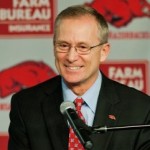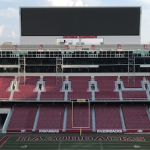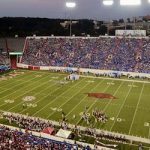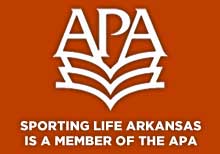By Hoyt Purvis
Almost all NFL exhibition games these days are played in the regular season home stadiums of NFL teams.
There was a time, however, when Little Rock and nearby Memphis were regular stops on the pre-season circuit. War Memorial Stadium in Little Rock opened in 1948 and a year later it was the site of an exhibition match between the Philadelphia Eagles and Los Angeles Rams. (It ended in a 24-24 tie.). That was the first of six consecutive years when the Eagles played in Little Rock
In the days leading up to the exhibition games, teams would sometimes have a portion of their pre-season training at locales near the site of the games. Prior to their games in Little Rock in 1949 and 1951, the Eagles spent time training in Hot Springs at Rix Stadium.
Hot Springs is increasingly recognized by baseball historians and touted by the city as the original home of spring training. Documentary film-maker Larry Foley is working on a film on Hot Springs baseball history. However, the spa city hosted a bit of pro football training as well.
The Arkansas-Eagles connection was sparked by the presence of Clyde (Smackover) Scott on the Philadelphia team. Scott, one of the all-time Razorback greats, played for the Eagles 1949-51 and briefly in 1952 after a stint with the Detroit Lions. The interest in Scott even led to re-creation radio broadcasts in Arkansas of Eagles games by Bob Fulton, a pioneer in Arkansas sports broadcasting and the first regular broadcaster for Arkansas Razorback sports. (Re-creation broadcasts were done by announcers, like Fulton, who were in a studio far away from the game site, describing the action, complete with sound effects, based on terse reports received by telegraph. Re-creations were especially common for baseball broadcasts.)
A rookie on that 1949 Eagles team that trained in Hot Springs, Chuck Bednarik, became an all-time NFL great as a center and linebacker. The oldest player, at 38, on the Eagles roster that year was tackle Otis Douglas, a name that will resonate with old timers in Arkansas. Amazingly, one year later, in 1950, he was the head coach of the Razorbacks. Douglas had already had some coaching experience in addition to four seasons as a player with the Eagles. He was recommended for the job by Greasy Neale, who coached the Eagles to NFL championships in 1948 and 1949. At Arkansas Douglas is remembered for a few big wins, some highly talented players who became NFL standouts, and three losing seasons (1950-52) with a record of 9-21.
Another Arkansas connection on the Eagles teams that spent August days in Hot Springs was Billy Hix, an end from Batesville and the Razorbacks, who played for Philadelphia in 1950.
In addition to the Eagles workouts in Hot Springs, as Evin Demirel has written, the Detroit Lions practiced there before defeating the Eagles 7-3 at War Memorial in August 1952.
And in 1951 the state was actually the site of training camps for two NFL teams. Besides the Eagles in Hot Springs, the New York Giants, prepping for a game at Crump Stadium in Memphis against the Chicago Bears, spent a week at Arkansas State College (now University) in Jonesboro.
For a sports-minded youngster, the presence of the Giants in Jonesboro was a memorable late-summer treat. And to make it more special, I was designated as the assistant water boy for the Giants. I think it was a designation by default. As I recall, the actual water boy was the son of the Arkansas State football coach, Forrest (Frosty) England. But my title allowed me to stand on the sidelines at old Kays Field next to famous football figures and soak in some of the atmosphere around one of the NFL’s top teams at the time.
I stood next to my water bucket awaiting a summons to rush it out to the field. I can only remember actually doing it one time and with my diminutive size and nervousness I probably spilled most of it before reaching the players. I do recall that it was just a regular galvanized bucket with a dipper shared by all. It was a far cry from today’s sports beverages. I doubt that anyone knew anything about electrolytes then and Gatorade was not even developed until 1965.
The Giants, coached by Steve Owen, finished 9-2-1 that season and 10-2 the year before. An informal assistant coach in 1951, Jim Lee Howell, Razorback football and basketball great from Lonoke, and a long-time Giants player, would succeed Owen in 1954 — at the same time that Vince Lombardi and Tom Landry began their pro coaching careers as assistants for Howell’s Giants.
Landry was a safety on that 1951 team that trained in Jonesboro, one of a number of notable names in football history on the Giants’ roster.
Several of the Giants were well known in Arkansas, having played against the Razorbacks. Kyle Rote was a heralded rookie running back and receiver from SMU. Charlie Connerly was the veteran quarterback from Ole Miss. And he was familiar with Crump Stadium in Memphis, having played there against Clyde Scott and the Razorbacks in 1947, when Scott led Arkansas to a 19-14 victory.
Other Giant standouts included Eddie Price from Tulane, who was the team’s leading rusher. Emlen Tunnel was one of the first African American stars in the NFL as a defensive back and kick returner. Tackle Tex Coulter seemed like a giant to me at 6-4, 250, but he would hardly standout among today’s super-sized players. Another Giants’ tackle was Al DeRogatis, who later became a commentator, alongside Curt Gowdy, on NBC telecasts of the NFL Game of the Week, when television began to popularize pro football nationally.
When the Giants took on the Bears at Crump Stadium in Memphis on September 2, 1951, I didn’t get to be on the sidelines, but having cajoled my dad into taking me to the game, I was in the stands, watching the Giants defeat the Bears, who were coached by the legendary George Halas, 14-0. An assistant coach for the Bears was Ken Kavanaugh, a Little Rock native who starred at LSU, named as the most valuable player in the SEC in 1939 before playing and then coaching for the Bears.
One of the star players for the Bears was former Razorback John Hoffman of Little Rock, who played both fullback and end. Also in the Bears lineup was John (Kayo) Dottley, the outstanding running back from McGehee, Ark., who was one of those east/south Arkansas players who went to schools out of state – in his case Ole Miss – before the Razorbacks had established a strong statewide presence. Dottley was the leading rusher for the Bears in 1951. Other notable names on the Bears roster were quarterback Johnny Lujack, the Notre Dame great, and George Blanda, originally a linebacker but better known as a quarterback and kicker in a 26-year pro career.
There was great talent on the field in that 1951 game in Memphis and it was certainly exciting for me. However, it was, I suspect, rather desultory, like many exhibition games.
I should note that when the Giants staff was packing up the equipment in Jonesboro before the game, one of them gave me a used and scuffed-up football, which I was, of course, pleased to have. I was not into autographs and probably hesitant to approach any of the stars for a signature. However, I did keep it beside my bed for a few days, until, inevitably, we needed a ball for a backyard game. Who knows where it wound up? But it was the experience and the exposure to gridiron greats that is not forgotten.
* * *
Hoyt Purvis is a professor, journalism and director of Fulbright Institute of International Relations at the University of Arkansas. He has worked as reporter for the Houston Chronicle, author and editor of a number of books and articles. Press secretary and special assistant to Senator J. William Fulbright, foreign and defense policy adviser to Senate Majority Leader Robert Byrd. Research interests: international media, media and government/politics, cable and media technology. Joined the University of Arkansas in 1982.




